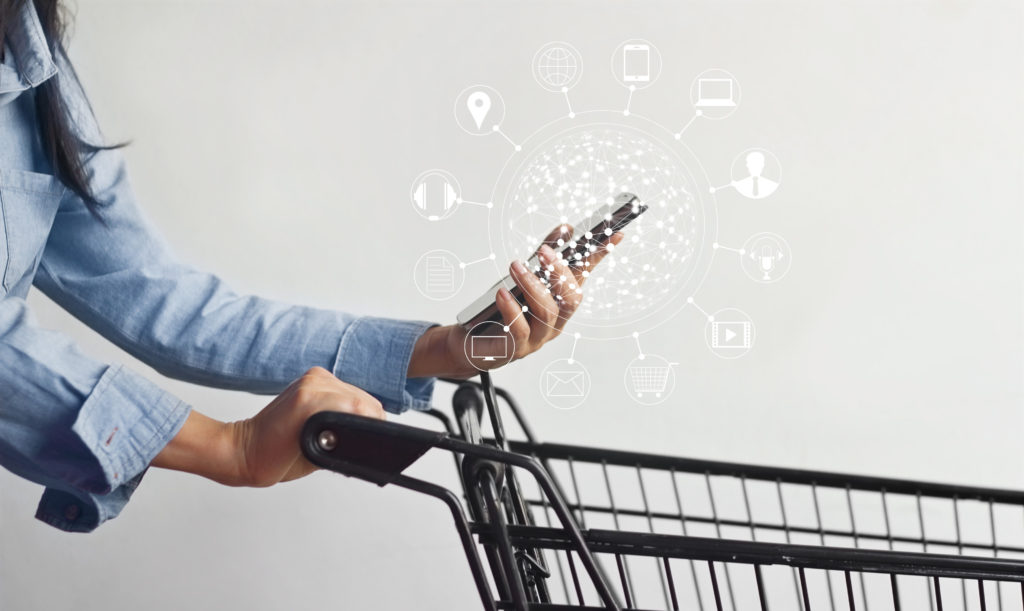 The ability to deliver a satisfactory omni-channel experience is the new standard. Over half of all retail customers expect a seamless brand experience between channels, yet many grocery and retail chains struggle to provide such a service. Omni-channel retail has taken a much more distinct form in the past year. It’s no longer simply having a mobile app and social media. It means being able engage with customers on any and every platform. It’s not just something they prefer, it’s something consumers demand from every brand. In fact, nearly three out of four customers engage with your business across multiple channels today.
The ability to deliver a satisfactory omni-channel experience is the new standard. Over half of all retail customers expect a seamless brand experience between channels, yet many grocery and retail chains struggle to provide such a service. Omni-channel retail has taken a much more distinct form in the past year. It’s no longer simply having a mobile app and social media. It means being able engage with customers on any and every platform. It’s not just something they prefer, it’s something consumers demand from every brand. In fact, nearly three out of four customers engage with your business across multiple channels today.
Being able to deliver a consistent brand experience across ecommerce, social media, mobile apps, kiosks, and employee interactions puts you at a major advantage over other brands. In fact, less than a quarter of retail brands even consider it a priority. Here are three ways to make sure your brand is consistently represented across all your channels.
Embrace the Internet of Things
You might already be aware that integrating your digital signage and kiosks can engage customers in unique ways. Are you also aware that you can connect with consumers through their mobile device, and offer unique experiences based on how they engage with your integrated system? It’s not just about offering mobile payments. Having digital signage or kiosks that can be interacted with through a mobile device is a way for your customers to interact with your brand in unique ways. For example, having a live feed on your signs near the front of your store that shows a live feed of Tweets directed at your brand will encourage customers to go on Twitter and engage with you. You can also set up beacons in certain areas of your retail location that offer coupons through your website, which will encourage users to visit your site and browse products while in your physical location.
Quality Over Quanity
The biggest reason you should consider expanding your brand to every channel is not just to engage your customers, however. Your attention should centered on the ability to offer transitions between channels that maintain the highest levels of conversions. Analyzing your metrics to find out where weaknesses lie is matter of seeing where customers “drop off.” For instance, if you offer click-and-collect but many customers fail to actually do the “collect” aspect, consider having customers pay online before picking up in store. Alternatively, allow click-and-collect to be done on multiple channels, including your mobile app and social media. It will increase the likelihood customers associate your brand with the features you provide.
It may seem counterintuitive when the phrase being described is “omni” channel to say that more isn’t always better. However, what consumers demand more than anything is a seamless transition between channels. Focus on making robust channels that receive a lot of attention and offer features between every channel you already manage before continuing to build out. It’s great if you can offer the ability to order a product online and then pick it up in store – but make sure that they can do so from all devices, from their mobile browser, to your app, to their desktop.
The Interactive Brand
The omni-channel experience is still a relatively new concept, but it’s one retailers ignore at their own peril. It is becoming the most valuable asset you can invest in to increase your customer base and provide a satisfying experience. It is the very way you interact with customers, and makes the difference in ensuring that your brand is properly represented and that your customers are willing to return. Check out some of things Best Buy is doing right in multichannel branding, or read how Worldlink Integration can help you leverage emerging technology in your brick-and-mortar retail locations.